
|
| |

|  Romania Romania
the awakening giant of Europe |

 Looking for lost prosperity - 1997 : A mixed performance - Rebuilding the Country - Looking for lost prosperity - 1997 : A mixed performance - Rebuilding the Country -
Major Infrastructure Projects March On - The Tough Game - No Pain, No Gain -
The Young Wolves of the Private Sector - What's Next? 
 No Pain, No Gain No Pain, No Gain
Restructuring does not affect only the banking system. It affects about every single Romanian industry. Although painful, as it involves most of the times significant layoffs, the process is nevertheless essential for the future of the Romanian economy, as it primarily relates to the ability of Romanian companies to survive in a competitive environment.
Besides mining, where the most rapid and spectacular restructuring has taken place, agriculture seems to be the sector where the most comprehensive restructuring is underway. The process, strongly backed by the World Bank through its Agriculture Structural Adjustment Loan (ASAL), aims at transforming the Romanian agriculture (traditionally a heavily subsidized industry in this country) into a sector able to face competition. The potential is huge, and so are the problems, using the modern technologies that are currently used in Europe, the Romanian agriculture would produce at least three times more. But, in the same time, there is six times less capital available for a hectare of arable land than in the European Union, and this is one of our problems. Another would be the structural problem – with far too many small plots of land, with farmers tending to do subsistence agriculture. Finally, there is the problem of effective marketing, of markets that are still missing. The restructuring process tackles all these problems, although hard budget constraints severely hamper the effectiveness of the program. The state-owned cereal farms that still hold some 12 percent of Romania’s arable land
(1.688 million hectares) will likely be privatized – the alternative being to restitute the land to its former owners. These farms (formerly known as IAS) took advantage over the years of significant investments into modern agricultural technology; they are organized and ran on the model of Western-type farms and they are of paramount importance Romania’s food self-sufficiency. Over 80 percent of the land they farm is fit for irrigation and vast land conservation works have been performed. Although investments in these farms virtually stopped in the ‘90s, they still get average outputs 20-35 percent higher than those harvested by small, undercapitalized private farmers. These 490 state-owned farms could become – provided wise privatization policies will be put in place – very sound investments for powerful foreign investors.
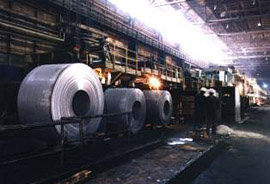
Industrial restructuring is far more difficult, partially because the general rule seems to be that the most troubled sectors
– power, mining, metallurgy – do have the most powerful and change-adverse trade unions. The ministry of Trade and Industry, is decided to go along this path with a comprehensive program: First of all, the monopoly of the states entities will be broken, the so-called Regis Autonomous; this means the restructuring of these bodies and, them into joint stock companies, separate the activities, spin off those that are not part of the core business and privatize them, create a competitive environment, as most of them are near-monopolies. The second thing is to support and offer incentives to the small and medium-sized enterprises. The mission is to accelerate the process, to provide consultancy to these companies that undergo serious restructuring programs and to finance alternative programs, based on a concept of local development, for the creation of new jobs.
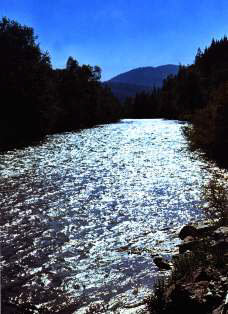
As in other areas, there are success stories and failures in restructuring, too. The years lost in empty debates over the best way to restructure country’s power monopoly could be considered such a failure that all post-communist governments are responsible for. Mr. Aureliu Leca , the Chairman and CEO of Renel – the Romanian Electricity Authority – is decided to solve the issue: "My aim while being here is to try to reshape the power sector. This means many different things: set up a proper institutional framework, draft an energy strategy for the next 15 years, and draft the energy law. I would say this last goal is particularly important, because it should make clear-cut options in two essential issues: the ownership and the competition. We decided that what we want to have is a mixture of private and public ownership and a fully competitive environment." The company, which is Romania’s largest company, with a turnover of over $2.5 billion, generates 96 percent of country’s electricity and over 40 percent of the thermal power. It has a nominal generation capacity in excess of
20,000 MW; slightly over one third of it is being currently used. On onehand demand has substantially shrinked in line with the fall of the industrial output, on the other hand almost 40 percent of the generation power comes from rather old and obsolete coal-burning power plants, many of whom exceeded their planned life span. 30 percent of the capacity is installed in hydroelectric power plants, 27.2 percent in hydrocarbons-burning plants, while country’s single nuclear power reactor makes the balance. With half of these power plants aged 20 years or more, the power reserve of the system is only apparently comfortable. In few words, Renel’s restructuring strategy aims at turning the generation sector into a highly competitive one, where private foreign ownership will be not only allowed, but strongly encouraged, and there will be open competition both between the local producers (to be organized in three branches, according to the type of fuel they use, and also competing against each other in the same branch) themselves, and against independent power producers and importers. The nuclear power plant will be the single exemption.
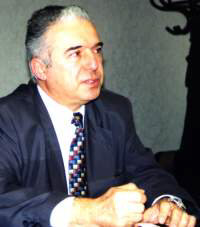
It is the newest Romanian power plant – it has been commissioned by the fall of 1996. Mr. Leca, with a background in nuclear power, is very proud of it: "This plant is using Canadian technology and it is the only nuclear power plant in Central and Eastern Europe based on Western technology. The first unit has a nominal power of 700MW. We are now trying to secure financing for the completion of the second unit, identical to this one. We are also looking forward to find partners for completing the other three – the power plant should have five units in the end, and actually some work is done at each one. This nuclear power plant will have a special statute: it was built by loans for which the state granted sovereign guarantees and we have to make sure that it will be able to pay these credits. It will be, in a way, the basis of the power generation sector." The distribution business will be also highly competitive, with some 10-15 companies – to be later on privatized – supplying both households, captive consumers (who will be protected by a regulatory body) and large industrial consumers, eligible consumers, which will be granted the right to freely buy electricity. It is only the high voltage transmission network which will remain state-owned, but also under the supervision of a regulatory body, unable thus to extract monopoly rent.
Country’s natural gas monopoly, Romgaz , is also targeted for restructuring and, at least partially, for privatization. With some 3,700 derricks, 150 gas fields and a countrywide network of over 20,000km, Romgaz produces around 10.5 billions m3 of natural gas per annum. Another 6.5 billion m3 come as associate and free gases from Romania’s oil fields. The balance up to the overall domestic consumption is made by 7.5 billion m3 imported from Russia. Until 1948 the then SonaMetan joint stock company operated as an integrated operation, with exploration, production, transport and distribution under the same roof. "We want to return to the normal situation that was then – a national joint stock company, with 2-5 percent of the stock held by the employees and the rest floated at the stock exchange. We would then offer access to the transport network to any other company. This strategy is supported both by our experts and by the 25,300 employees," says one of Romgaz’s top managers. Chances are management’s restructuring plans will clash against those of the Ministry of Trade and Industry, which rather seeks to dismantle the company into smaller and hopefully leaner operations, according to their core business, and to eventually privatize some of them later – a project more or less similar to Renel’s transformation.
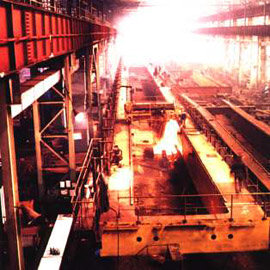
The next sector slated for restructuring may well be metallurgy. This is one of Romania’s most developed industries, besides oil&petrochemical industry. It is both vertically and horizontally developed, with very profitable segments
– such are, for instance, the companies within the aluminum industry and the four steel pipes producers – and not that well-doing ones, as some long products suppliers. But one cannot say Romanian metallurgy without Sidex . The company is based in Galati, on the left bank of the Danube some 140 miles East of Bucharest, and is country’s single largest joint stock company, as well as the single largest Romanian exporter. Exports, virtually on all world markets (the EU single market accounts for some 25 percent of company’s exports, 10 percent go to other European countries, 10 percent to Latin America, 5 percent to Middle East, the rest to Far East), usually account for some $550-600 million, out of a turnover close to $1 billion. | Sidex has a production capacity of 10.5 million tons and is specialized in flat products; it never produced that much – the highest ever production was reached in 1989 (7.9 million tons). While the Ministry of Trade and Industry has its restructuring plans for the steel industry and other producers and the trade unions are supporting the idea of creating two holdings – one for flat products, centered on Sidex, the other for long products – Sidex’s management sees things differently and seems pretty determined to go its own way: "We started a deep restructuring and modernization program back in 1994. Its main targets are: to reach in 2002 a production of 5.5 million tons of top quality steel; closure of idle equipment and facilities; investments up to $1.5 billion – so far we invested some $270 million, primarily in the production of cast iron and steel; 25,000 employees, as against
42,000 in 1990 and 36,000 to date. We will finalize this year investments worth another
$250 million, including modernization of the galvanized zinc rolling mill and of two continuous casters – both with USX Corporation. We also negotiate with another American company, regarding the longitudinally welded pipe facility. Some $150 million will be devoted to environment protection – we do have some pollution problems, but they are much smaller than in the Pittsburgh area," says Mr. Dumitru Nicolae, Sidex’s CEO.
A near-monopoly, as it produces over 90 percent of country’s flat steel products and supplies over 1,400 Romanian companies with the steel they need, Sidex bears a great responsibility both for the city where is based (it yields over 80 percent of city’s output and basically half of city’s population depend on the huge steel mill’s welfare) and for the country. Which among other things gives company’s management larger negotiating powers than a smaller company would have.

"Our task is to make the company attractive and competitive. We are not in charge with the privatization – that is SOF’s job. Until we’d be privatized, we are open for cooperation with foreign partners – on equal terms," firmly states Mr. Nicolae.
Romania has an unusually diversified automotive industry for a country of its size. It has two major passenger cars producers – Automobile Dacia, that produces both cars based on an old, Renault 12 license, and its own models, seeking too to assemble Hyundai’s Accent model starting next year, and Daewoo Automobile Romania, a joint venture where the Korean chaebol would have made investments by the end of the century in excess of $1 billion.
The country also has an off-road, 4WD carmaker, Aro, and also a buses, trolley-cars and utility vans manufacturer, Rocar . Newly-appointed CEO of Rocar, Mrs. Gabriela Radu (company’s former CFO, with a 20 year career as an economist with the company) and her team managed to save a company that was clearly going under by mid-‘90s. The idea that likely saved the company was to reduce the excessive localization of the production and to promote cooperation with leaders in the industry. Rocar scored a $35 million turnover last year.
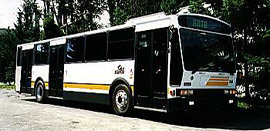
The company launched recently a brand new, state-of-the-art bus model – "It is a very high-tech bus, made in cooperation with an Italian body builder, De Simon and powered by an environment-friendly MAN engine," says a proud Mrs. Radu. Other cooperations are under negotiations with DAF – which Rocar managed to defeat in a 1997 international tender for Bucharest’s Public Transport Authority – and with the Swiss Hess, a major aluminum body manufacturer. According to Radu, Rocar enjoys 75 percent market share; the potential market is of some 3,000 buses and 5,000-8,000 vans per annum.
The last major company within the automotive industry is the heavy trucks and lorries manufacturer Roman . Another former glory of the Romanian industry, Roman built along the years Romania’s fleet of some 125,000 heavy trucks. Company’s products, based on a German MAN license, were also exported, with China the best overseas market. While the company itself preserved a decent technological level
– even Daewoo contemplating the opportunity to outsource some works to the truck maker – Roman’s domestic customer base was badly wounded by the chronical huge interests in the Romanian banking system. A tough-minded man in his early 40s, Roman’s CEO, Mr. Carol Rugacs puts the blame for Roman’s troubled condition on the lack of specific market instruments – such as a leasing mechanism. "The National Union of Road Transporters keeps asking me since 1996 when will we sell on leasing, but we cannot do that yet. We took some leasing programs from the US, but we still need some financing to set up a leasing company." Although fully dedicated to his company and strongly determined to turn it around, Carol Rugacs is aware of Roman’s weaknesses: "Our weakness is the engine – we never had enough money to invest in research – and therefore we import state-of-the-art engines that comply with the toughest European environmental norms, Euro II. That is why we are interested to associate with an engine producer – we are talking now to Caterpillar, as even Volvo admits that the Caterpillar engines are the best
-- with an integration degree of 50-60 percent, to produce together engines for the Romanian market and for some other markets, as Latin America or China. We are realistic, we do not intend to sell in Paris." Until then, Rocar was divided into seven profit centers, ready anytime, if needed, to spin off – "we took this idea from the American truck makers." In 1997 Rocar sold only some 1,800 trucks. Even so, the company had 92 percent market share. "It’s kind of obvious that Romanian companies could not afford to buy trucks. This year’s forecast is 3,000 units," adds Rugacs. A genuine warrior, Carol Rugacs concludes: "I’m still in love with my job as an engineer. I do believe that if one can do something here, this is the moment to do it, by facts, not by words."
Some companies are good examples of the effectiveness of the new privatization strategy promoted by the team in charge with economic issues – privatize fast and let the owner do the restructuring job. Policolor is Romania’s premier producer of dyes, paints and varnishes; company’s control stock was acquired by the end of September 1997 by two venture capital funds on an even basis – the Romanian-American Enterprise Fund and the Romanian Investment Fund got 25.5 percent each. Policolor’s CEO, Mr. Silviu Istratescu is pretty happy with the new owners: "By early ‘90s we had started an ambitious modernization project. We commissioned a new production facility for metallic paints for cars and we also built our own power station. We’re now on our way to revamp all production sections. I’m sure now that these projects will be accomplished as the two funds have committed investments of some $12 million over the next five years." Although Policolor strongly commands the domestic market, with a market share in excess of 60 percent, Istratescu admits that his organization still has a long way to go. He welcomes not only the fresh money injected in the business by the two funds, but also their people: "We have now here three people from the US, they are very helpful; they made an audit on organizational, marketing, sales, purchasing and financial issues. The representatives of the funds in the Board are always very attentive to preserve the autonomy of the management team, but they really help us a lot to develop the company." The takeover turned Policolor into one of the blue chips of stock exchange’s first tier. Policolor stock outperformed most other stocks, with the dollar price of the stock increasing three times in the one year since launched.
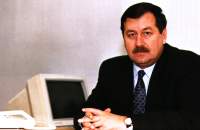
This does not necessarily mean that only private/privatized companies can be successfully restructured. Oltchim and its CEO Mr. Constantin Roibu make for an excellent example of a company that undertook a wide and comprehensive re-engineering process by its own forces, while still state-owned. Romania’s largest – and very likely best-doing
– chemical company, dominating the local market for chlorinated products, petols, oxo-alcohols and pesticides, Oltchim has actually started the restructuring process in
1990, when "we ceased production of some products because they had potential for creating environmental liabilities," recalls Roibu. Wisely leveraging Oltchim’s position of one of country’s top ten exporters, Mr. Roibu was able to avoid a harmful excessive interference of the state into the business. Thus the company managed to go ahead with a large investment program, along two major lines: cost slashing and bold diversification. "Since 1994 we invested about $150 million in our production facilities, aiming primarily at reducing costs, but also at enhancing the quality and alleviating the environmental issues. For the next few years we foresee investments worth another $250 million. By the end of this program there is a very clear chance that Oltchim will become one of the most profitable companies in this country." It may not even take that much time. Oltchim is already showing healthy margins, well above the industry average, and gained the reputation – completely unusual for a state-owned company
– of being more concerned about profitability than about meeting production targets. The company is the highest cap stock of bourse’s first tier – it currently accounts for some 15 percent of the total market capitalization – and is one of the preferred acquisitions of portfolio investors. The recent recommendation of ABN Amro Securities – who rated Oltchim as a definite buy – has only boosted trading. When Oltchim’s management decided to diversify into the food processing business (!) by taking over several medium-sized local companies in the sector, many said people at Oltchim insane. But the barter system put in place by Oltchim – the company offers complete agricultural solutions and then processes the crops – and the natural resources of the region (Oltchim is located in one of country’s best known regions of orchards) led to an unexpectedly big success. Despite the chemical core business still accounts for some 95 percent of the $200 million annual sales, Oltchim eventually contemplates now a situation when it is unable to meet the demand for its fruit jams on the American market! Oltchim is a very unusual company from another point of view as well
– while for the vast majority of Romanian companies restructuring equals mass layoffs, Oltchim added 1,000 employees to its 1989 6,200 staff.
Very likely the sector where the difference between reality and potential is most striking is the tourism. The country truly has a tremendous tourism potential, with an extremely diversified landscape, from 8,000ft mountains to the Black Sea coast, from wildlife that cannot be found elsewhere in Europe to the unique Danube Delta and to very well preserved ancient arts, customs and handicrafts. For the very young Minister of Tourism, the way to go is quite clear. According to the strategy drafted by the ministry, the selloff of tourism companies should be done at market’s price, however under two conditions: firstly, the new owners should perform significant investments for specific infrastructure modernization and services quality enhancement, and secondly they should stick to the tourism business profile of the acquired company or asset. Some people paid attention to this kind of reasoning, and years ago Hilton took over one of the most beautiful buildings in Bucharest, the Athenee Palace hotel, a remnant of "la belle epoque", Bucharest-style. It took to Hilton more than five years to fully restore and refurnish the hotel – and probably tens of millions of dollars. But the efforts paid off, and today Athenee Palace Hilton Bucharest is Romania’s single five star hotel, a common place for business meetings, investment forums and, of course, for those who enjoy a good hotel in a perfect location. The friendliness of the staff will only make the stay more pleasant. |
© World INvestment NEws, 1998.
This is the electronic edition of the special country report on Romania
published in FORBES
Magazine's enriched with complementary information,
such as full interviews, detailed company files and more.
June 1 st 1998 issue
Developed by AgenciaE.Tv |
|
|
|
| |
| | | |
|

